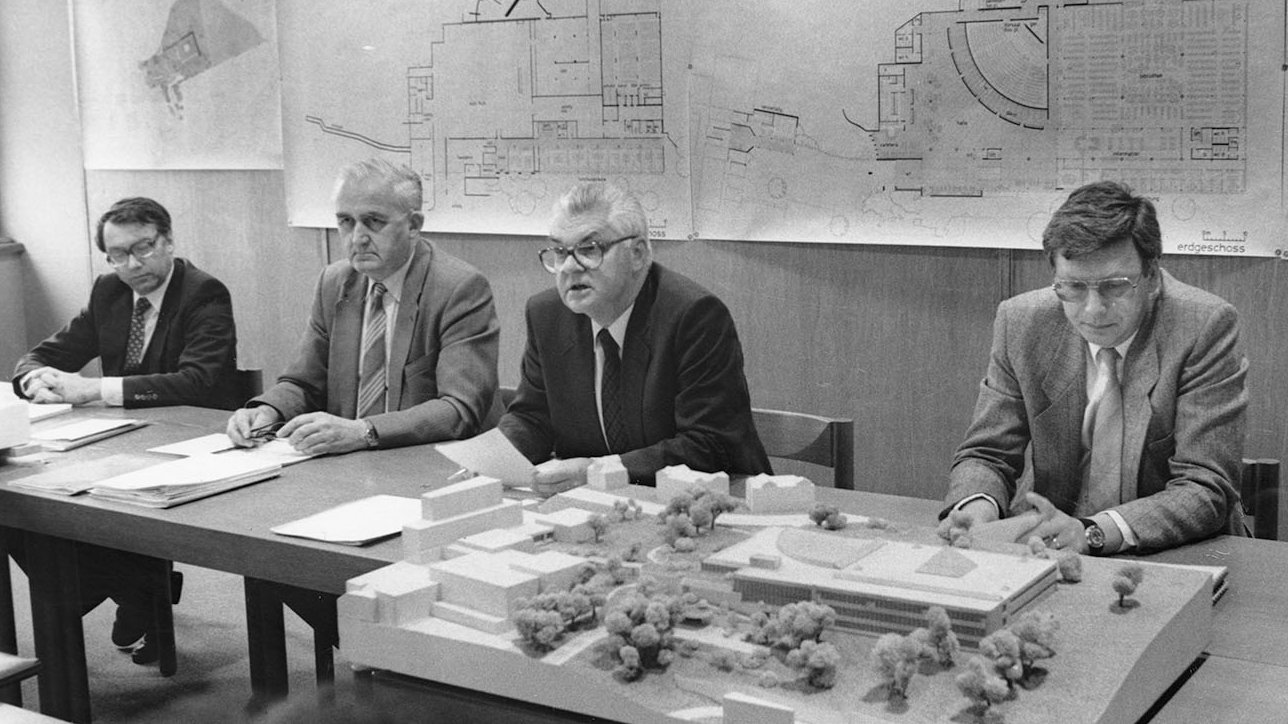When the number of students exceeded 2000 for the first time in the winter semester 1981/82, the demand for more teaching and learning space at HSG, which was designed to accommodate only 900 students, became increasingly obvious. What was needed were a large lecture theatre, seminar rooms, space for the IT department, and a bigger library, which at that point was bursting at the seams. The prospective of having to admit large numbers of Baby Boomers, who were soon to complete the secondary school, exacerbated this situation, making an expansion of the campus absolutely necessary.
After the approval of the project loan by the Senate in 1980, task force groups were set up and set to work by HSG and the canton. The groups worked fast, and a call for tenders was published in the following year.
In June 1982, the tender was won by Bruno Gerosa, whose architectural proposal not only solved the space problems with a new library building, a large lecture theatre, seminar and computer rooms but also blended in very well with the surrounding residential area and the existing campus.

In 1984 at HSG's Dies academicus, President Alois Riklin made an urgent appeal to the residents of St. Gallen to support the project. The referendum was scheduled for September 1985. Following the event, numerous members of the Higher Education Council and the voting committee carried out a successful public relations campaign for the extension of the HSG campus. An important factor in the positive outcome of the referendum was the complete relief of the city with the Fiscal Equalisation Act of 27 February 1985, which took the financial burden completely off the city of St. Gallen. The city and the canton accepted the bill in September with a vote ratio of 53 percent, which gave the further development of the university a new, solid foundation.